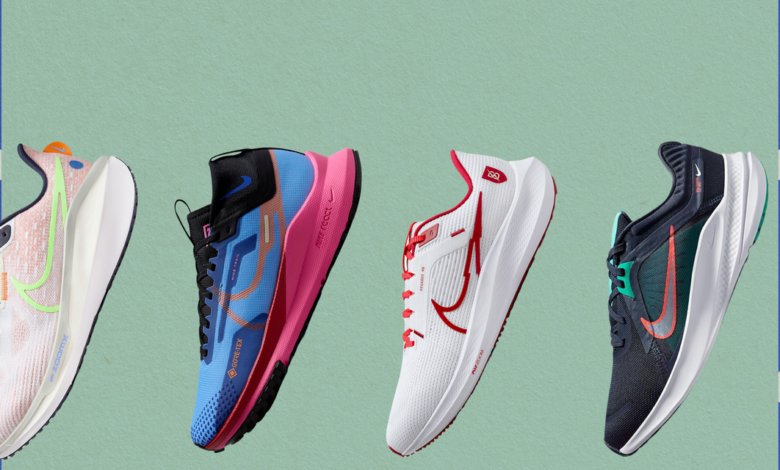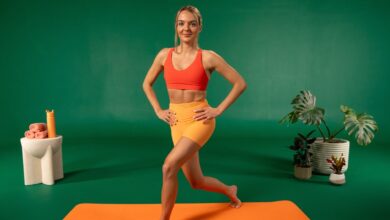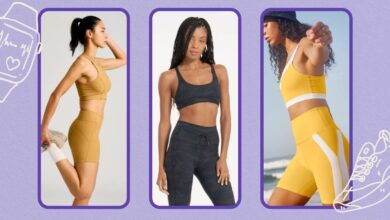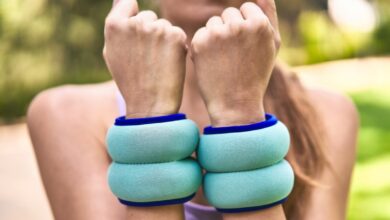The Best Nikes for Every Type of Runner

All products are independently selected by our editors. If you buy something, we may earn an affiliate commission.
Nike’s iconic swoosh appears on footwear ranging from sprinting spikes to marathon sneakers to trail shoes—there’s a pair for pretty much anyone who likes to run, but it can be tricky to know which is the best option for you right off the bat. With the help of seasoned athletes, trainers, and podiatrists, we narrowed down the best Nike running shoes for a range of needs, and found out exactly what to look for in your next pair.
Our top picks
From expert-recommended shoes to SELF Sneaker Award–winners, here are the best of the best.
- Best for Everyday Runs: Nike Air Zoom Vomero 17
- Best for Beginners: Nike Air Zoom Pegasus 40
- Best for Extra Cushioning: Nike Invincible 3
- Best for Varied Terrain: Nike Pegasus Trail 4 Gore-Tex
- Best for Speed: Nike ZoomX Streakfly
- Best for Jogging and Walking: Nike Quest 5
Jump to:
- The Best Nike Running Shoes
- What To Look For in Daily Training Shoes
- What To Look For in Trail Running Shoes
- What To Look For in Shoes Made for Long-Distance Racing and Speed
The best Nike running shoes
Read on to learn more about our top picks—and see which pair is right for you.
Best for Everyday Runs: Nike Vomero 17
- Pros: Super responsive cushioning, breathable
- Cons: Some reviewers note they aren’t great for fast-paced runs
Shannon Sangster, a Detroit-based runner, triathlete, and founder of the League of Champs sports podcast, tells SELF that his favorite daily trainer is the Vomero because it keeps all areas of the foot comfortable. It has ample padding on the tongue and a cushioned, responsive forefoot. So you can trust it’ll provide a soft landing and help your feet spring forward. Sangster says this workhorse of a shoe provides such a pleasant ride that it’s not uncommon to see some of Nike’s elite long-distance runners wearing it as part of their sneaker rotation.
- Available sizes: US 5 to 12 | Available widths: medium and wide | Weight: 8.5 ounces | Heel-to-toe drop: 10 millimeters | Colors: 7 options
Best for Beginners: Nike Air Zoom Pegasus 40
- Pros: Responsive feel, secure fit
- Cons: May require a break-in period, according to some reviewers
Nike’s Pegasus road running shoe has been a longtime staple, and the most recent model lives up to its reliable reputation with a snappy ride, bouncy Zoom Air unit in the heel, and a breathable interior. “The Pegasus is a great neutral shoe that will work for just about anyone, and it’s uncomplicated enough to be accessible for beginners,” Caroline Grainger, runner and ISSA-certified personal trainer at FitnessTrainer, tells SELF. Jossie Abraham, DPM, a podiatric surgeon at Hartford HealthCare Connecticut Orthopedic Institute at St. Vincent’s Medical Center in Connecticut, agrees, noting that the Pegasus 40 also has an internal band that gently secures your foot, which can help you maintain proper form when you’re on the move.
- Available sizes: US 5 to 12 | Available widths: medium and wide | Weight: 8.53 ounces | Heel-to-toe drop: 10 millimeters | Colors: 15 options
Best for Support: Nike Air Zoom Structure 25
- Pros: Supportive, comfortable
- Cons: On the heavier side
The Air Zoom Structure is another good pick if you’re a beginner, and it’s also worth a try if you want a little more support in your running shoes. It’s technically considered a neutral shoe (meaning it isn’t necessarily intended for motion control or arch support), but this cushy sneaker has features like a molded heel and grooves down the sides, which can prevent rolling and help your foot remain stable. Plus the impact-absorbing high stack of foam works in tandem with the rocker shape of the sole to promote a smooth, comfy stride.
- Available sizes: US 5 to 12 | Available widths: medium, wide, and extra wide | Weight: 9.3 ounces | Heel-to-toe drop: 10 millimeters | Colors: 8 options
Best for Extra Cushioning: Nike Invincible 3
- Pros: Highly padded, surprisingly stable
- Cons: On the heavier side, runs narrow (according to our tester)
If you’re looking for a max-cushioned shoe that’s still breathable enough to keep you cool on long runs, the 2023 SELF Sneaker Award–winning Invincible 3 strikes that balance. It doesn’t offer the speed of Nike’s more elite shoes, but it feels soft underfoot and offers a nice bounce, thanks to its sky-high foam base. “The shoes make me feel like I’m running on clouds,” Stef Baron, a NYC-based marathoner, tells SELF. Plus Nike’s Flyknit fabric keeps air flowing to help manage sweaty feet. While it has a seriously plush, comfortable ride, the Invincible 3 also provides a fair amount of support. According to our tester, it’s much more stable than previous iterations of the Invincible, which made her feel confident to take it out on longer runs.
- Available sizes: US 5 to 12 | Available widths: medium and wide | Weight: 9.1 ounces | Heel-to-toe drop: 9 millimeters | Colors: 13 options
Best for Tough Trails: Nike Wildhorse 8
- Pros: Durable, excellent traction
- Cons: Heavy, not particularly versatile
The Wildhorse 8 is a well-padded, protective option for tackling rough terrain. Its rugged sole has a grippy lug pattern that increases traction and a rock plate in the forefoot that prevents bruises. It’s a favorite of Coby Walsh—a trail runner based in Salt Lake City who frequently runs on high alpine trails and rocky ridgelines—due to its just-right fit and reliable performance. All of these features mean the Wildhorse is best-suited for trails only though, not roads, where it can feel bulky or stiff.
- Available sizes: US 5 to 12 | Available widths: medium | Weight: 10.08 ounces | Heel-to-toe drop: 9 millimeters | Colors: 5 options
Best for Varied Terrain: Nike Pegasus Trail 4 Gore-Tex
Nike
Pegasus Trail 4 GORE-TEX Trail Running Shoes
- Pros: Lightweight for a trail shoe, surprisingly versatile, waterproof
- Cons: Not as protective or rugged as other trail shoes
A 2023 SELF Sneaker Award–winner, the Pegasus Trail is actually a hybrid shoe, meaning it can perform on dirt paths and roads alike (our tester wore it seamlessly from a trail run to brunch in New York City). Thanks to its waterproof Gore-Tex lining, this pair of Nike sneakers is a go-to for Baron in inclement weather: “I wear them when I need to keep my feet dry because they do an amazing job at keeping out the rain and snow.” She mainly uses the Pegasus Trail for runs ranging from 3 to 10 miles, but it would also bode well on longer efforts, thanks to its lightweight, responsive foam padding.
- Available sizes: US 5 to 12 | Available widths: medium | Weight: 8.25 ounces | Heel-to-toe drop: 9.5 millimeters | Colors: 9 options
Best for Race Day: Nike Vaporfly 3
- Pros: Extremely lightweight, surprisingly cushy for a racing shoe
- Cons: Very pricey
Made with a responsive, full-length carbon fiber plate (which acts like a lever and pushes your foot forward faster) and lightweight foam, the Nike Vaporfly is built for road racing at all distances. It’s one of Sangster’s all-time favorite running shoes and his go-to for longer, faster training runs. “It has a bit of everything: The responsiveness that you want out of a faster shoe, but also the comfort and cushion that you want out of a shoe that can go the distance for the marathon,” he says. It’s pretty expensive for a running shoe, but if it’s speed you’re after, it’s hard to find a better option.
- Available sizes: US 5 to 12 | Available widths: medium | Weight: 5.82 ounces | Heel-to-toe drop: 8 millimeters | Colors: 6 options
Best for Training Runs: Nike Zoom Fly 5
- Pros: Bouncy and propulsive feel, wide and supportive platform
- Cons: Reviewers note that it requires a break-in period
If you’re looking for a shoe for training runs, like interval workouts that mix fast and slower paces, the Zoom Fly 5 should be on your list. Dr. Abraham highlights its wide base and bouncy midsole, which provide stability and propulsion in equal measure. According to Baron, the result is rather powerful, indeed: “When I wear them, I almost feel like the base of this shoe is propelling me forward.” She uses them for shorter runs throughout the week, which mainly consist of tempo runs (at slightly slower than 5K pace) and hill repeats.
- Available sizes: US 5 to 12 | Available widths: medium | Weight: 8.53 ounces | Heel-to-toe drop: 10 millimeters | Colors: 5 options
Best for Speed: Nike ZoomX Streakfly
Nike
Streakfly Road Racing Shoes
- Pros: Lightweight, very breathable (according to reviewers)
- Cons: Not durable
“[The ZoomX Streakfly] was seriously one of the best first impressions in a running shoe that I’ve had in some years,” Sangster says. He adds that it has the perfect combination of cushion and springiness for optimizing your speed. However, as one of Nike’s lightest racing shoes, it doesn’t have the durability you’d need for longer distances. Try it for track workouts or short, fast runs or races.
- Available sizes: US 5 to 16.5 | Available widths: medium | Weight: 6.52 ounces | Heel-to-toe drop: 6 millimeters | Colors: 5 options
Best for Jogging and Walking: Nike Quest 5
Nike
Quest 5 Running Shoes
- Pros: Relatively affordable, very comfortable
- Cons: Lacks bounce and responsiveness
This highly cushioned running shoe is a great option for the everyday runner or walker. The mesh upper provides breathability, while the soft foam through the midfoot adds comfort. It may lack Air Zoom or ZoomX-quality foam, but it still provides a steady ride—and you can wear it to your HIIT class too.
- Available sizes: US 5 to 12 | Available widths: medium | Weight: N/A | Heel-to-toe drop: N/A | Colors: 4 options
Best for Leveling Up: Nike Winflo 10
- Pros: Beginner-friendly, secure fit, relatively affordable
- Cons: May run small (according to some reviewers)
The Nike Winflo 9 is a solid training shoe for the casual runner who wants to start increasing their speed. Though it has a lower price tag, it features a Nike Air unit in the sole for added springiness in your toe-off transitions. (You’ll find that same kind of technology in pricier models.) It doesn’t skimp on comfort, either: The mesh upper encourages airflow, the toe box has wiggle room, and the padding around the ankle and heel keeps your foot from slipping.
- Available sizes: US 5 to 12 | Available widths: medium | Weight: 8.53 ounces | Heel-to-toe drop: 10 millimeters | Colors: 7 options
What to look for in daily training shoes
Whether you’re getting ready for a 5K, logging an easier running workout, or just trying to increase your mileage, you need a pair of sneakers that you’ll actually be excited to lace up day after day. Versatility is a key feature of daily trainers, and they should provide the right amount of comfort and support for your everyday miles.
On that note, look for daily training sneakers with ample ankle support (usually in the form of additional padding around the heel collar) and a slightly wider base if you want more stability (a shoe with a larger landing area should help prevent your foot from rolling), Dr. Abraham says. If you know that your feet tend to roll inward, or overpronate, you can look for motion control or stability shoes, which are designed to better hold your foot in alignment and prevent that movement. Neutral shoes, on the other hand, don’t feature additional support and allow your foot to move freely.
You may want a more specialized style of shoe if you’re planning to run a marathon, trying to set a race PR, or racking up miles on technical terrain. But if you only use one pair of running shoes, finding an option that meets this general criteria should serve you well.
What to look for in trail running shoes
Trail running shoes aren’t just designed for agility and pace—they also come with features that’ll keep you safe when you go off-road. Dr. Abraham recommends pairs with lots of traction along the outsole to prevent slipping, along with deep lugs to provide grip on loose terrain. You can look for shoes made with high-abrasion rubber and waterproof materials for further durability and protection from the elements. Finally, a secure fit is especially important in trail runners, because you may need to move abruptly or to the side in order to avoid roots and rocks, and a well-fitting shoe will help you stay nimble.
What to look for in shoes made for long-distance racing and speed
Whether you’re adding speed training to your running routine or aiming for a PR in your next road race, a pair of specialized shoes can be a worthwhile investment. Lighter-weight sneakers made with responsive, bouncy foam will put some pep in your step when you’re going for higher speeds, Dr. Abraham says. She adds that ones with a curved, rocker sole will help propel you forward with less effort. Nike really shines in this area, with models built for both longer road races and short-speed efforts.
Just keep in mind that while these shoes offer excellent performance, they are far less durable than everyday running shoes. Also, they’re not the most versatile and comfortable for other activities; you won’t want to wear these to a strength training class or for a stroll in the park.
Related:



